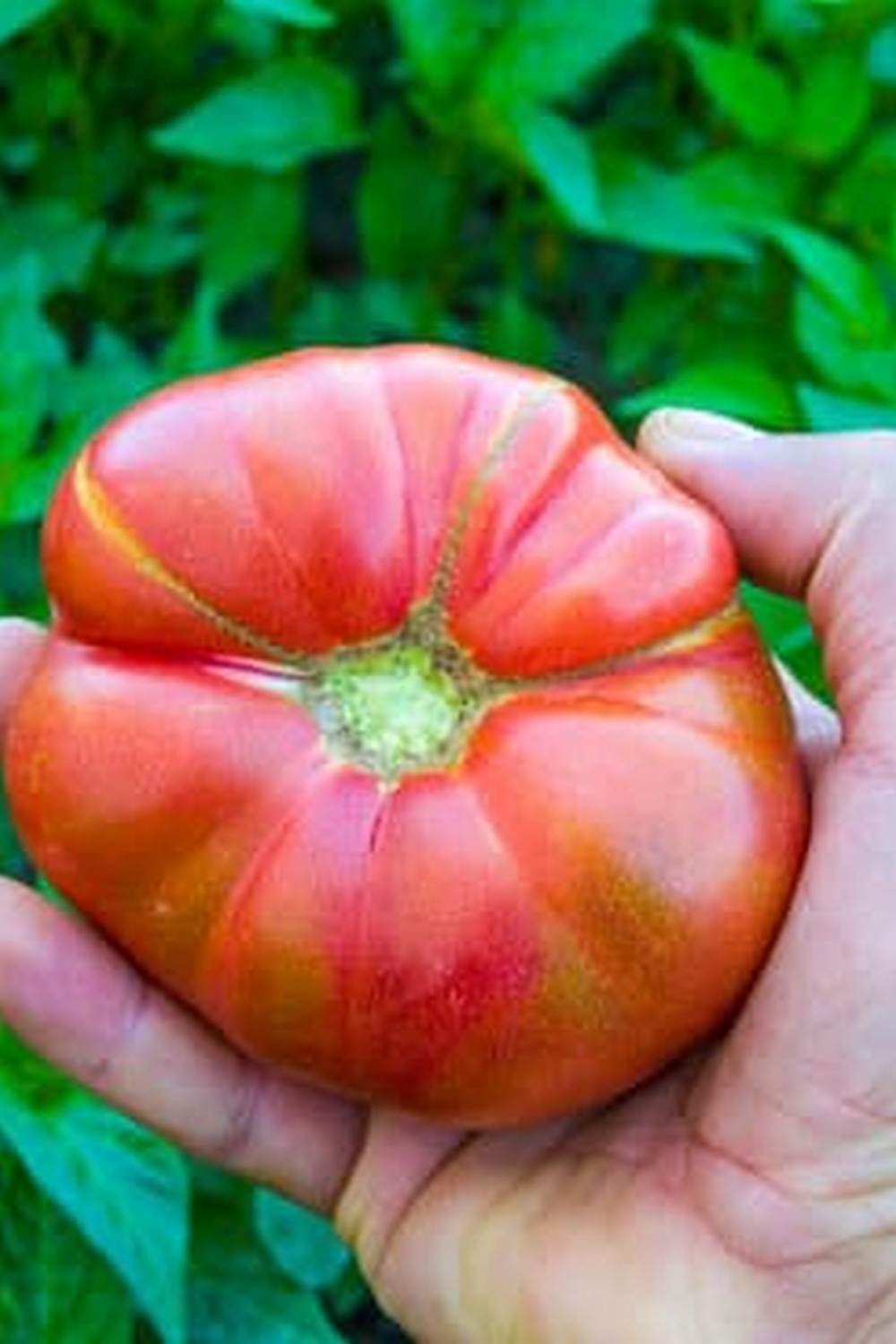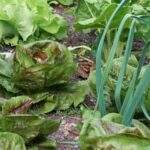Are you ready to delve into the world of vegetable gardening in Central Florida? This comprehensive guide is your go-to resource for understanding the unique climate and soil of this region, as well as expert tips on how to cultivate a successful vegetable garden. Whether you’re a seasoned gardener or just starting out, the Central Florida Vegetable Gardening Guide has everything you need to know to grow your own fresh produce right in your backyard.
Central Florida’s warm and humid climate, combined with its specific soil composition, presents both opportunities and challenges for vegetable gardening. In this article, we’ll explore the best vegetables to grow in Central Florida, how to work with the unique soil and climate conditions, as well as essential tips for watering, fertilizing, and pest control.
Additionally, we’ll provide a seasonal planting guide and a detailed calendar outlining the best times to plant and care for your vegetable garden throughout the year.
Whether you’re interested in raised bed gardening, container gardening, or traditional in-ground gardening methods, this guide will also cover popular Central Florida vegetable gardening methods. We’ll also provide a list of resources for local nurseries, gardening clubs, and online resources to support and inspire vegetable gardeners in Central Florida. Get ready to embark on an exciting journey into the world of vegetable gardening tailored specifically for Central Florida’s unique environment.
Best Vegetables to Grow in Central Florida
When it comes to vegetable gardening in Central Florida, it’s essential to choose the right vegetables that are well-suited for the region’s unique climate and soil conditions. Luckily, there are several beginner-friendly vegetables that thrive in Central Florida, making it an ideal location for cultivating a bountiful garden.
Some of the best vegetables to grow in Central Florida include tomatoes, peppers, squash, cucumbers, beans, and okra. These vegetables are not only well-adapted to the warm and humid climate of Central Florida but are also relatively easy to grow for beginners.
In addition to the aforementioned vegetables, leafy greens such as lettuce, kale, and spinach also perform well in Central Florida’s climate. These crops can be grown during the cooler months of the year when temperatures are more moderate.
Furthermore, root vegetables like carrots, radishes, and sweet potatoes can be successfully cultivated in Central Florida’s soil with proper care and attention. By choosing vegetables that are suitable for the local climate and soil conditions, Central Florida gardeners can increase their chances of a successful harvest.
It’s important for Central Florida vegetable gardeners to select varieties that are specifically bred for heat tolerance and disease resistance. When sourcing seeds or seedlings for your vegetable garden, look for cultivars that are recommended for hot and humid climates like those found in Central Florida.
Additionally, incorporating organic mulch into your garden beds can help regulate soil temperature and moisture levels while minimizing weed growth. With careful planning and selection of appropriate vegetable varieties, you can enjoy a thriving vegetable garden in Central Florida.
| Vegetable | Recommended Varieties |
|---|---|
| Tomatoes | Heatmaster, Solar Fire |
| Peppers | Sweet Heat, Cajun Belle |
| Squash | Zephyr Squash, Golden Glory Zucchini |
| Cucumbers | Picklebush Cucumber, Diva Cucumber |
Understanding Central Florida Soil and Climate
Central Florida boasts a unique climate and soil composition that can both challenge and reward vegetable gardeners. Understanding the specific characteristics of the soil and climate in this region is crucial to successful gardening.
Soil Composition
Central Florida soil is typically sandy, well-drained, and slightly acidic. This composition presents both benefits and challenges for vegetable gardening. On one hand, the sandy soil allows for good drainage, preventing waterlogged roots. On the other hand, it also means that nutrients are easily leached from the soil, requiring additional attention to fertilization.
Climate Conditions
The climate in Central Florida is characterized by hot, humid summers and mild winters. This offers a longer growing season compared to other regions but also comes with challenges such as intense heat and occasional frost in winter. Understanding these climate conditions is essential for selecting the right vegetables and timing planting to maximize growth and yield.
Working With Central Florida Soil and Climate
Given the sandy nature of the soil, gardeners in Central Florida may need to amend their soil with organic matter such as compost or peat moss to improve its ability to retain moisture and nutrients. Additionally, using mulch around plants can help maintain soil moisture levels. When it comes to the climate, providing appropriate shading during the hottest months and choosing heat-tolerant varieties of vegetables are important strategies for successful vegetable gardening in Central Florida.
By understanding the unique characteristics of Central Florida’s soil and climate, gardeners can make informed decisions about plant selection, timing, and cultivation practices to ensure a bountiful harvest of delicious homegrown vegetables. It’s important to stay informed about local conditions through resources like the central florida vegetable gardening guide for ongoing success.
Tips for Successful Central Florida Vegetable Gardening
Central Florida’s unique climate and soil present both opportunities and challenges for vegetable gardening. Understanding how to work with these specific conditions is key to a successful harvest. When it comes to watering, it’s important to be mindful of the hot and dry conditions that are characteristic of Central Florida.
Deep, infrequent watering is ideal for promoting healthy root growth and drought tolerance in vegetables. Using soaker hoses or drip irrigation can help deliver water directly to the roots while minimizing evaporation.
Fertilizing in Central Florida requires attention to the region’s sandy soil, which tends to have low nutrient retention. Incorporating organic matter like compost into the soil can improve its fertility and structure, providing essential nutrients for vegetable plants. It’s also important to test the soil annually and adjust fertilizer applications based on the results.
Pest control is another critical aspect of successful vegetable gardening in Central Florida. The warm and humid climate creates an ideal environment for pests such as aphids, whiteflies, and caterpillars. Employing integrated pest management techniques, such as regularly inspecting plants for signs of infestation and using natural predators or organic pest control products when necessary, can help keep pest populations in check without harming beneficial insects.
| Tip | Description |
|---|---|
| Water Deeply | Use soaker hoses or drip irrigation to deliver water directly to plant roots. |
| Improve Soil Fertility | Incorporate organic matter like compost into sandy soil, and test the soil annually for nutrient levels. |
| Integrated Pest Management |
By following these expert tips specific to the Central Florida region, vegetable gardeners can maximize their chances of a bountiful harvest despite the challenging climate and soil conditions.
Seasonal Planting Guide
When it comes to successful vegetable gardening in Central Florida, understanding the best times to plant specific vegetables is crucial. The unique climate of Central Florida, with its hot and humid summers and mild winters, requires careful consideration when planning the timing of your vegetable garden. By following a seasonal planting guide tailored to the region, you can ensure a bountiful harvest year-round.
Spring Planting
In Central Florida, spring is an ideal time to plant a variety of vegetables. As the last frost date typically occurs in late February or early March, gardeners can start planting warm-season crops such as tomatoes, peppers, cucumbers, and squash. Additionally, leafy greens like lettuce, kale, and spinach thrive in the moderate temperatures of spring in Central Florida.
Summer Planting
While summer in Central Florida brings intense heat and humidity, there are still vegetables that can be successfully grown during this time. Heat-tolerant crops such as okra, sweet potatoes, and southern peas are well-suited for summer planting in the region. It’s important to provide ample shade and water during the hottest months to help these vegetables thrive.
Fall Planting
Fall marks the beginning of the growing season for many vegetables in Central Florida. Cooler temperatures make it an excellent time to plant crops such as broccoli, carrots, beets, and radishes. With proper care and attention to watering during drier autumn months, these cool-season vegetables can flourish in Central Florida’s climate.
By following a month-by-month breakdown of when to plant specific vegetables in Central Florida, gardeners can take full advantage of the region’s unique growing conditions. Whether it’s spring tomatoes or fall broccoli that you’re eager to cultivate, understanding the seasonal planting guide for Central Florida is essential for a successful vegetable garden.
Central Florida Vegetable Gardening Calendar
When it comes to successful vegetable gardening in Central Florida, timing is everything. The unique climate of the region means that certain vegetables thrive when planted at specific times throughout the year. With a detailed calendar outlining the best times to plant, harvest, and care for your vegetable garden, you can ensure a bountiful harvest and healthy, thriving plants.
In Central Florida, the prime planting season for many vegetables begins in late winter and runs through early spring. This is due to the milder temperatures and lower humidity during this time of year, which are favorable conditions for many popular garden vegetables such as tomatoes, peppers, squash, and cucumbers.
As the weather begins to warm up even more in late spring and early summer, it’s important to shift your focus to heat-tolerant crops like okra, sweet potatoes, and southern peas.
As the summer heat peaks in Central Florida, some traditional garden vegetables may struggle to survive. However, this is the perfect time to plant heat-loving herbs like basil and rosemary. Additionally, you can start preparing for a fall vegetable garden by sowing seeds for cooler weather crops such as lettuce, spinach, and carrots towards the end of summer.
Throughout the fall and into early winter months in Central Florida, it’s essential to maintain a vigilant eye on your vegetable garden as cooler temperatures return. Be prepared to protect tender plants from potential frost or freeze events by covering them with row covers or bringing them indoors if needed. By following a detailed Central Florida Vegetable Gardening Calendar tailored specifically to the region’s climate and planting seasons, you can maximize your gardening success all year long.
Popular Central Florida Vegetable Gardening Methods
When it comes to vegetable gardening in Central Florida, there are a variety of methods that can be used to cultivate a successful and abundant garden. Each method has its own advantages and considerations, so it’s important for gardeners in the region to understand the differences between raised bed gardening, container gardening, and traditional in-ground gardening.
Raised bed gardening is a popular choice for Central Florida vegetable gardeners due to its numerous benefits. This method involves creating planting beds that are raised above the ground level, usually contained within wooden or metal frames. The raised beds provide better drainage, warmer soil temperatures, and can be filled with high-quality soil to promote healthy plant growth. Additionally, raised beds can make it easier to control weeds and pests compared to traditional in-ground gardens.
Container gardening is another viable option for Central Florida residents who may have limited outdoor space or poor soil quality. This method involves growing vegetables in containers such as pots, buckets, or even fabric grow bags. Container gardening allows for greater flexibility in terms of placement and mobility, making it ideal for those with small yards or balconies. Gardeners can also easily move containers to protect plants from extreme weather conditions or pests.
Traditional in-ground gardening remains a popular choice for many Central Florida vegetable gardeners who have ample space and favorable soil conditions on their property. While this method may require more initial work to prepare the soil and establish planting areas, it offers the opportunity to grow a wide range of vegetables on a larger scale.
With proper soil amendments and maintenance practices tailored to the unique characteristics of Central Florida soil and climate, traditional in-ground gardens can yield bountiful harvests throughout the growing season.
Resources for Central Florida Vegetable Gardeners
In conclusion, the Central Florida Vegetable Gardening Guide provides valuable insight into the unique climate and soil conditions of the region, allowing both beginner and experienced gardeners to successfully cultivate a variety of vegetables. By understanding the specific needs of Central Florida soil and climate, gardeners can make informed decisions about which vegetables to grow and how to care for them.
The expert advice on watering, fertilizing, and pest control outlined in the guide will help gardeners tackle common challenges and achieve bountiful harvests. Additionally, the month-by-month seasonal planting guide and detailed gardening calendar provide a roadmap for successful vegetable cultivation throughout the year. With this comprehensive resource at their fingertips, Central Florida vegetable gardeners can feel confident in their ability to create thriving gardens.
Furthermore, the guide’s inclusion of popular gardening methods such as raised bed gardening, container gardening, and traditional in-ground gardening offers flexibility for individuals with different space constraints or preferences. Finally, the list of local nurseries, gardening clubs, and online resources serves as a valuable support system for Central Florida vegetable gardeners as they navigate their gardening journey.
With this wealth of information and support available, anyone looking to start or improve their vegetable garden in Central Florida has all they need at their disposal.

If you’re looking to get into vegetable gardening, or are just looking for some tips on how to make your current garden better, then you’ve come to the right place! My name is Ethel and I have been gardening for years. In this blog, I’m going to share with you some of my best tips on how to create a successful vegetable garden.





